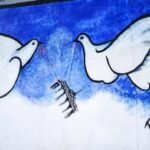Introduction to Beijing
Beijing is a city where tradition and modernity seamlessly blend together. The remnants of imperial history are mainly concentrated within the Second Ring Road, along the central axis featuring landmarks like the Temple of Heaven, the Forbidden City, and Qianmen Street. The Central Business District (CBD), located along the Third Ring Road, is filled with towering skyscrapers and bustling traffic, showcasing the rapid advancements in technology.
In the western suburbs, you’ll find not only the picturesque Fragrant Hills and ancient temples but also prestigious universities like Tsinghua and Peking University. The Fourth Ring Road is home to the Olympic venues, where the Bird’s Nest and Water Cube have become iconic symbols of Beijing.
Gulou and Houhai (Shichahai) are located in the Second Ring Road, where old Beijing’s hutongs converge. The famous Nanluoguxiang is nearby, and Houhai is the liveliest bar district in the city, making it a must-visit spot. Wangfujing and Qianmen are right at the heart of Beijing, perfect for sampling renowned traditional brands and shopping. Sanlitun, found along the Third Ring Road, is known for its vibrant nightlife with popular nightclubs like Tanghui and MIX. Olympic Park, accessible via subway lines 8 and 15, hosts the venues for the 2008 Olympics, including the Bird’s Nest and Water Cube. Peking University and Tsinghua University, located in the northwest Fourth Ring Road and reachable via subway line 4, are prestigious institutions admired by many aspiring students. The 798 Art District, located in the northeast Fifth Ring Road, is one of the landmarks of Beijing’s art and culture.
Personal Impressions:
Once you get familiar with Beijing’s transportation, you’ll find the subway system is quite convenient, with stations designed to cover many attractions. If you want to experience the hutongs, you must visit Shichahai. Indeed, the winding alleys here twist and turn, intertwining with one another. The banks of Shichahai have a vibe reminiscent of West Lake, with rows of willows swaying in the breeze, leisurely fishermen, couples strolling along the waterfront, and courtyard homes with deep red doors tightly shut. It’s a picture of tranquility.
Beijing is a fascinating city where busy and leisurely moments coexist, and modernity and ancient charm blend together. If you have the time, take a stroll through Beijing’s hutongs to experience the lifestyle of the locals. If you need to ask for directions, you can say, “Excuse me, how do I get to [specific street]?” People will be more than happy to help you out.
There are many places to explore in Beijing, such as the 798 Art District, Nanluoguxiang, and the Panjiayuan Antique Market. It all depends on how much time you have to choose your adventure!

Beijing is a captivating city that seamlessly blends classical charm with modern flair. The narrow hutongs, traditional teahouses, trendy bar streets, and bustling commercial districts come together to create a vibrant cultural tapestry where modern elements intertwine with the authentic essence of old Beijing.
When visiting, the must-see attractions are undoubtedly Tiananmen Square, the Forbidden City, and the Great Wall. Beyond these iconic sites, there are plenty of diverse options to suit everyone’s interests. Whether you’re a couple looking for romance or a family on a fun getaway, whether you’re drawn to royal heritage or fashionable neighborhoods, you’ll find the perfect spot in Beijing to match your desires.
The Forbidden City, also known as the Palace Museum, is located in the heart of Beijing, just 1 km north of Tiananmen Square, directly across from the southern gate of Jingshan Park. Surrounding the Forbidden City is a moat, encircled by a massive wall that is about 3 km in length and nearly 10 meters high. There are gates on all four sides: the Meridian Gate to the south, the Shenzhou Gate to the north, the Donghua Gate to the east, and the Xihua Gate to the west. At each of the four corners of the wall stand intricately designed corner towers that add to the architectural beauty.
The Forbidden City can be broadly divided into two main sections: the southern part serves as the ceremonial area, known as the Outer Court, while the northern part is the residential area, called the Inner Court. All the buildings are arranged along a central axis, creating a symmetrical layout. North of the residential area lies a charming Imperial Garden, where royal family members once enjoyed leisure activities. Today, many of the palaces in the Forbidden City host comprehensive exhibitions showcasing a vast collection of ancient art treasures, making it one of the richest museums in China in terms of cultural relics.


Visiting the Forbidden City: Recommended Route
Central Axis:
- Meridian Gate (午门)
- The Three Great Halls (太和门三大殿)
- Qianqingmen Gate (乾清门)
- Qianqing Palace (乾清宫)
- Jiaotai Hall (交泰殿)
- Kunming Palace (坤宁宫)
- Imperial Garden (御花园)
- Shenzhou Gate (神武门)
- Note: From Shenzhou Gate, you can enter Jingshan Park.
East Route:
- Meridian Gate (午门)
- The Three Great Halls (太和门三大殿)
- Qianqingmen Gate (乾清门)
- East Six Palaces (东六宫)
- Ningxiu Palace (宁寿宫)
- Zhenfei Well (珍妃井)
West Route:
- Meridian Gate (午门)
- The Three Great Halls (太和门三大殿)
- Qianqingmen Gate (乾清门)
- West Six Palaces (西六宫)
- Cining Palace (慈宁宫)
- Yangxin Hall (养心殿)
- Shufang Pavilion (漱芳斋)
The Forbidden City operates a one-way visitor route from south to north. Visitors must enter through the Meridian Gate (南门) and exit through the Shenzhou Gate (北门).
Address:
4 Jingshan Front Street, Dongcheng District, Beijing
Admission Fees:
- Tickets (Seasonal Pricing):
- Off-Peak Season (November to March): 40 CNY/person
- Peak Season (April to October): 60 CNY/person
- Additional Tickets for Special Exhibitions (No seasonal distinction):
- Treasure Gallery (宁寿宫区, Xiqu Gallery, Shigu Gallery): 10 CNY/person
- Clock Gallery (奉先殿区): 10 CNY/person
Opening Hours:
The Forbidden City is closed on Mondays, except during public holidays and the summer season (July 1 to August 31). Please check the official website for updates and daily reminders.

The Old Summer Palace (Yuanmingyuan)
The Old Summer Palace, located in the western suburbs of Beijing near the Summer Palace, consists of three gardens: Yuanming, Changchun, and Qichun. It was a large royal garden created and managed by the Qing Dynasty emperors over a span of more than 150 years.
Renowned not only for its beautiful landscaping, the Old Summer Palace also served as a rich royal museum. Within its halls, there are numerous rare cultural relics from both China and abroad. The Wenyuan Pavilion in the garden is one of the four major royal libraries in the country, housing precious texts such as the “Complete Library in Four Sections” , “Collection of Ancient and Modern Books” , and the “Essentials of the Complete Library” .
Unfortunately, this world-famous garden was tragically looted and burned by British and French forces in the late 19th century. Since then, it has endured numerous acts of destruction and plunder, ultimately becoming a ruin.
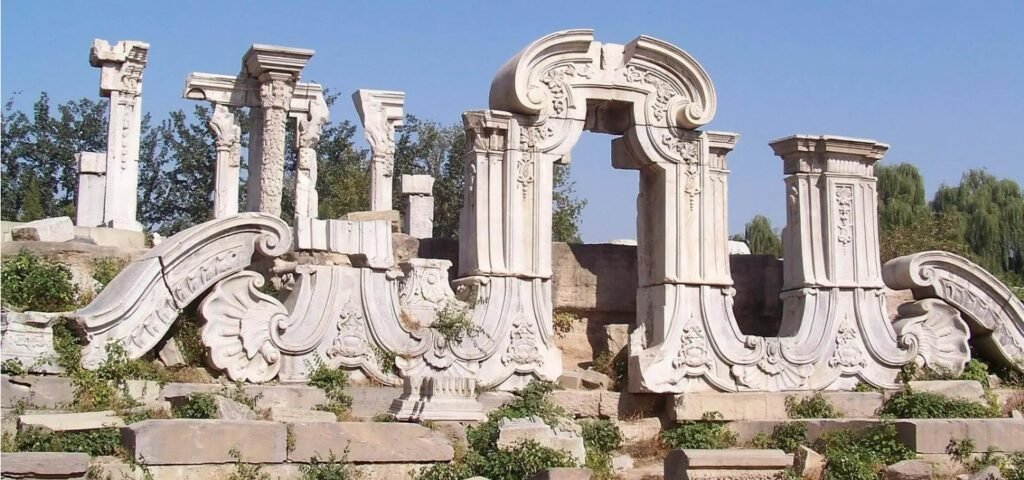
Tiananmen Square
Located on the southern side of Chang’an Avenue, Tiananmen Square is the largest public square in the world, situated along Beijing’s traditional central axis. At the center of the square stands the Monument to the People’s Heroes. Continuing south, you’ll reach the Mao Zedong Memorial Hall, which leads you to Zhengyangmen, commonly referred to as Qianmen.
On the west side of the square is the Great Hall of the People, while the east side features the National Museum of China. Directly opposite the square, on the north side of Chang’an Avenue, is the iconic Tiananmen Gate Tower, with the shimmering Jinshui River flowing below it.
Every morning and evening, a solemn flag-raising and lowering ceremony takes place at Tiananmen Square. For first-time visitors to Beijing, witnessing this ceremony is an essential experience for many Chinese tourists.

Ming Tombs
The Ming Tombs, known as the royal burial site for 13 emperors of the Ming Dynasty after the capital was moved to Beijing, are a significant historical site. Currently, only four areas are open to visitors: Changling, Zhaoling, Dingling, and the Sacred Way. Although these are tombs, only Dingling has been excavated to date. A visit to its underground palace, guided by a tour, offers insights into the layout of the Ming royal burial grounds.
Changling is the most prominent of the Ming Tombs, being the burial site of the Ming founder, Emperor Zhu Di. It is also the largest of the tombs. The Changling Museum displays a variety of unearthed artifacts, including phoenix crowns, scholar hats, men’s jade belts, and hairpins—definitely worth seeing.
In addition to the historical significance, taking a stroll around Zhaoling and along the Sacred Way is quite pleasant. The path is lined with various lively stone statues, and the area around Zhaoling tends to be quieter, making it an ideal spot for a peaceful walk.
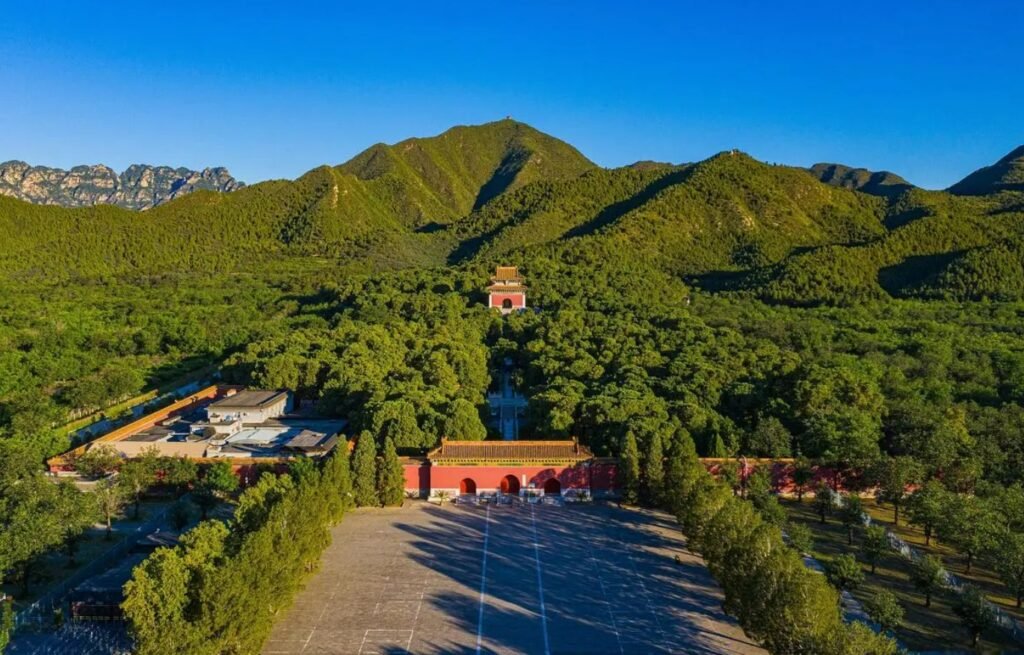
Badaling Great Wall
Badaling is located in the southern part of Yanqing County, northwest of Beijing, about 80 kilometers from the city center. It is the best-preserved section of the Ming Great Wall and the most visited by tourists in Beijing. The wall stretches for 3,741 meters and reaches an elevation of 1,015 meters, making it a strategically significant site that has been contested throughout history.
In addition to the remains of the Great Wall and the ancient city of Chadao, the Badaling scenic area features the Great Wall Museum of China and a panoramic cinema. The Great Wall Museum is a themed museum dedicated to the history, military significance, architecture, economy, culture, and current state of the Great Wall. Next door, the panoramic cinema continuously screens a 17-minute documentary titled “The Great Wall,” providing visitors with a deeper understanding of this iconic structure.
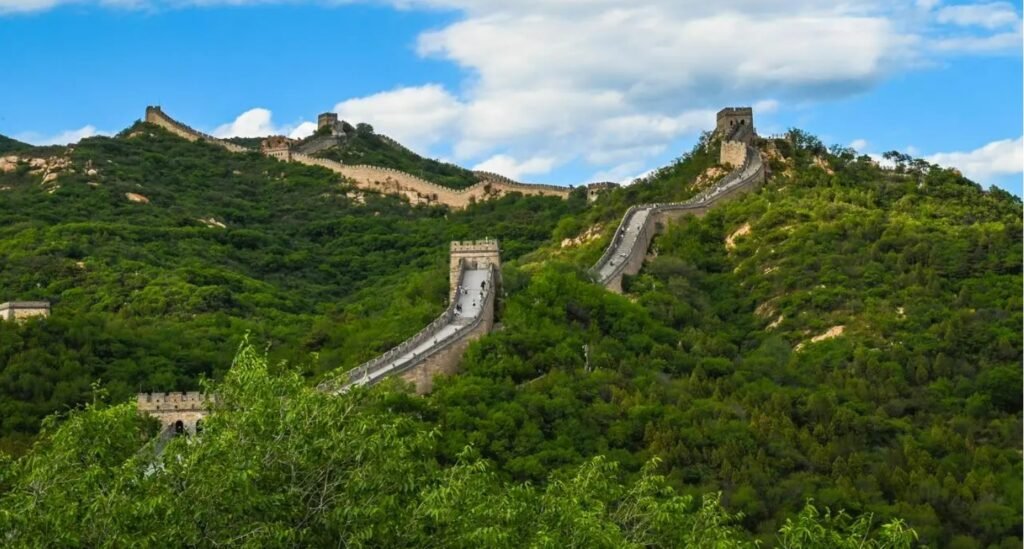
Accommodation Recommendations
Beijing offers a wide variety of hotels and guesthouses, catering to all tastes and budgets. You can find accommodations scattered throughout the city, from luxury hotels to traditional courtyard hotels that capture the essence of old Beijing, as well as hostels and budget inns. This diversity ensures that there’s something for everyone.
For travelers aiming to visit major attractions, it’s convenient to look for hotels in close proximity to these sites. Hotels near transportation hubs might be a bit pricier, but they can save you on travel costs and precious time. Chain hotels offer moderate pricing while providing more comfort and safety compared to similarly priced small inns. For young backpackers, hostels or university guesthouses are great options, providing a friendly atmosphere and affordable rates.
Culinary Delights
Beijing is not only famous for its traditional local dishes like Peking duck, hot pot, and various Beijing snacks, but it also boasts a wide array of exquisite cuisines that reflect the rich diversity of Chinese culture. You can savor royal court dishes, private chef specialties, and halal cuisine, along with international flavors including French fine dining, American casual meals, Japanese teppanyaki, Korean cuisine, Southeast Asian dishes, and even Indian food. In Beijing, you’ll find countless options to satisfy your taste buds and indulge in a culinary adventure!
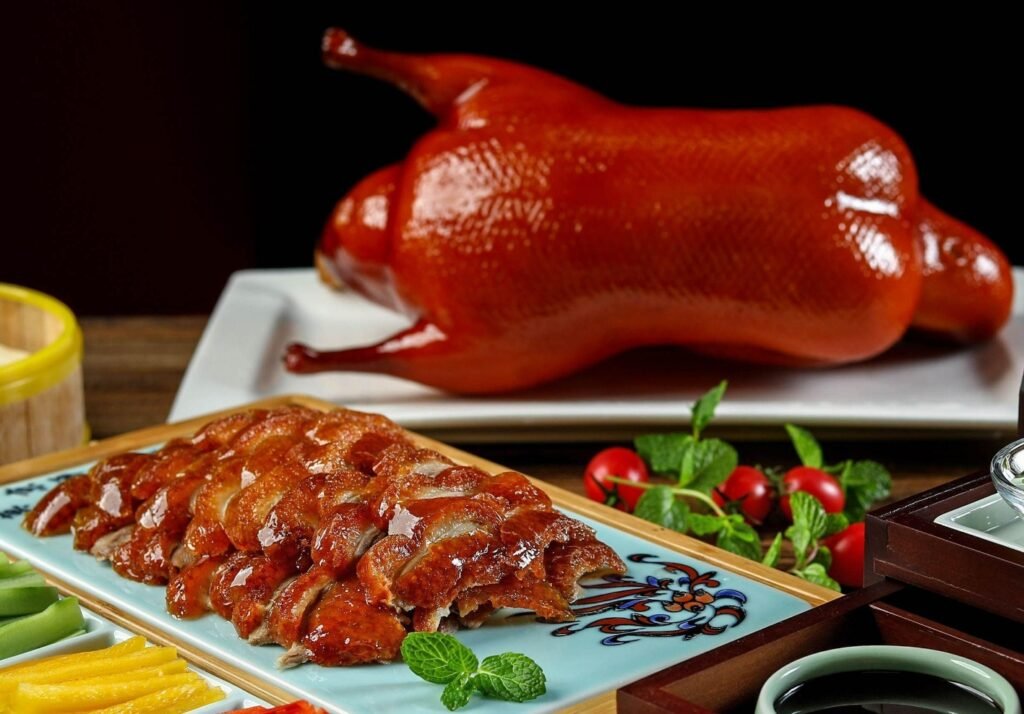
Peking Duck
Peking duck comes in two main styles: the hanging oven-roasted version represented by Quanjude and the simple oven-roasted variety represented by Bianyifang. To enjoy this iconic dish, you take a thin, freshly made pancake, spread a layer of sweet bean sauce on it, add chopped green onions, and then layer on slices of crispy duck. Roll it all up into a cylinder and enjoy the delicious combination of flavors and textures!
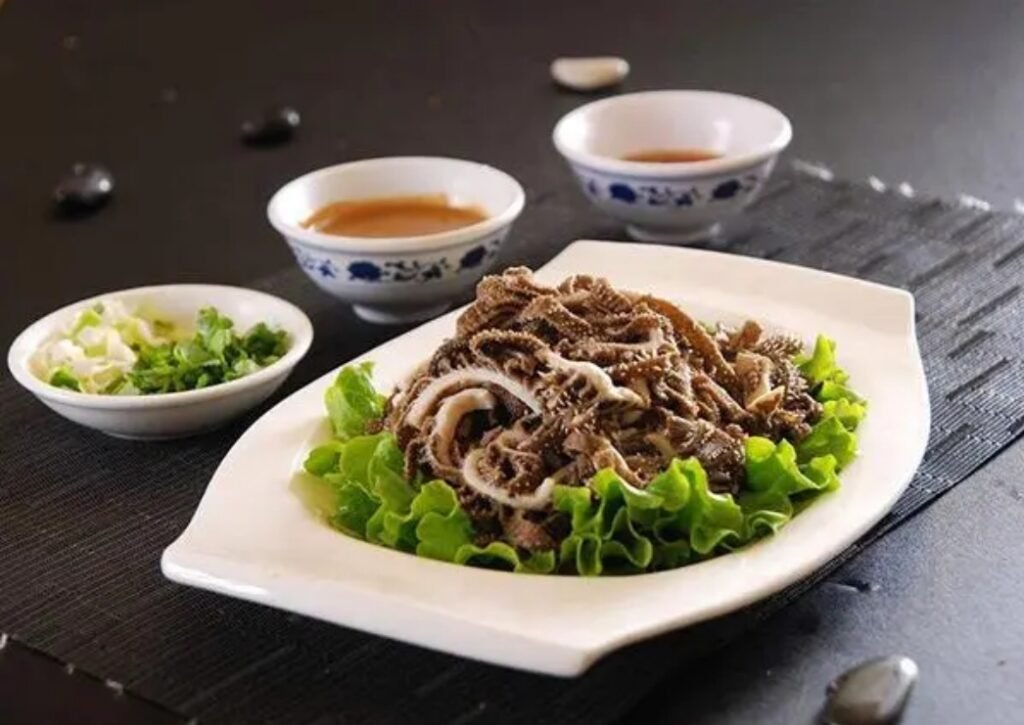
Exploding Tripe
Exploding tripe is short for water-blanched lamb tripe. Each lamb’s stomach is divided into six distinct parts: the tripe neck, tripe board, gourd, scattered tripe, mushroom tripe, and food tripe. To enjoy exploding tripe, you must dip it in a sauce mix that typically includes cilantro, chopped green onions, sesame paste, fermented tofu, chili oil, garlic paste, marinated shrimp oil, chive flowers, soy sauce, and vinegar, similar to the dipping sauces used for hot pot. In Beijing, exploding tripe is often run by the Hui ethnic community, with the most famous being Bào Dù Wáng, located in the Niujie area.
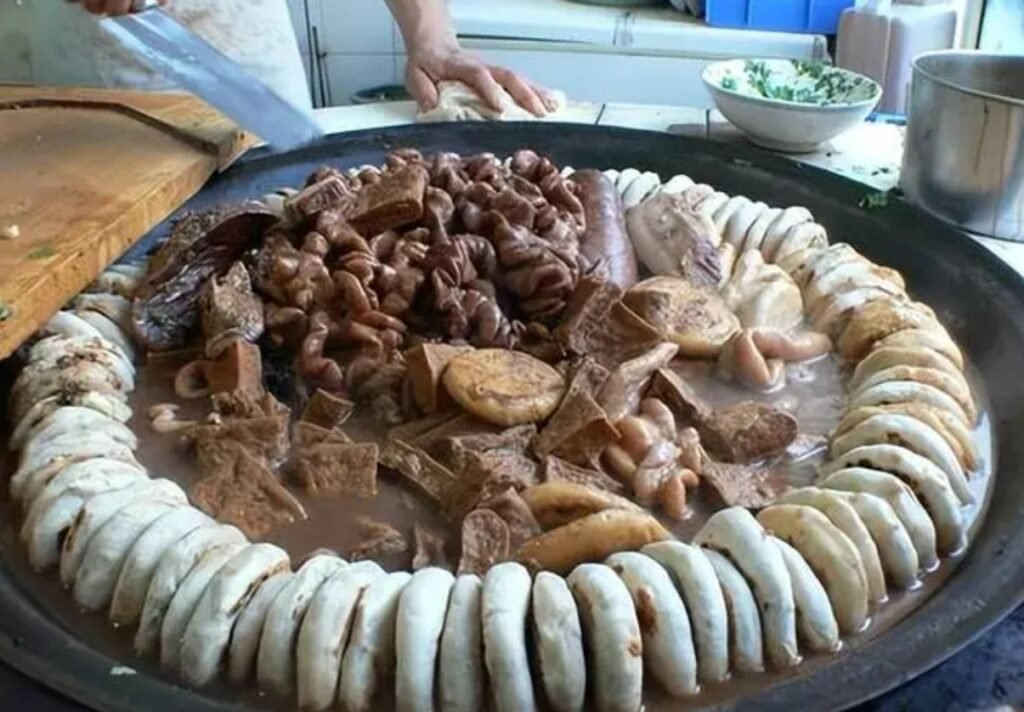
Braised Pork with Bread
Lu Zhu Huo Shao is a pure representation of old Beijing cuisine—it’s as authentic as it gets, even more so than Peking opera. This dish originated from the royal palace’s “Su Zao Rou.” Legend has it that during the Guangxu era, due to the high cost of pork belly used in Su Zao Rou, people began to substitute it with pig head meat and offal. Over time, with the skills of home cooks, Lu Zhu Huo Shao was born.
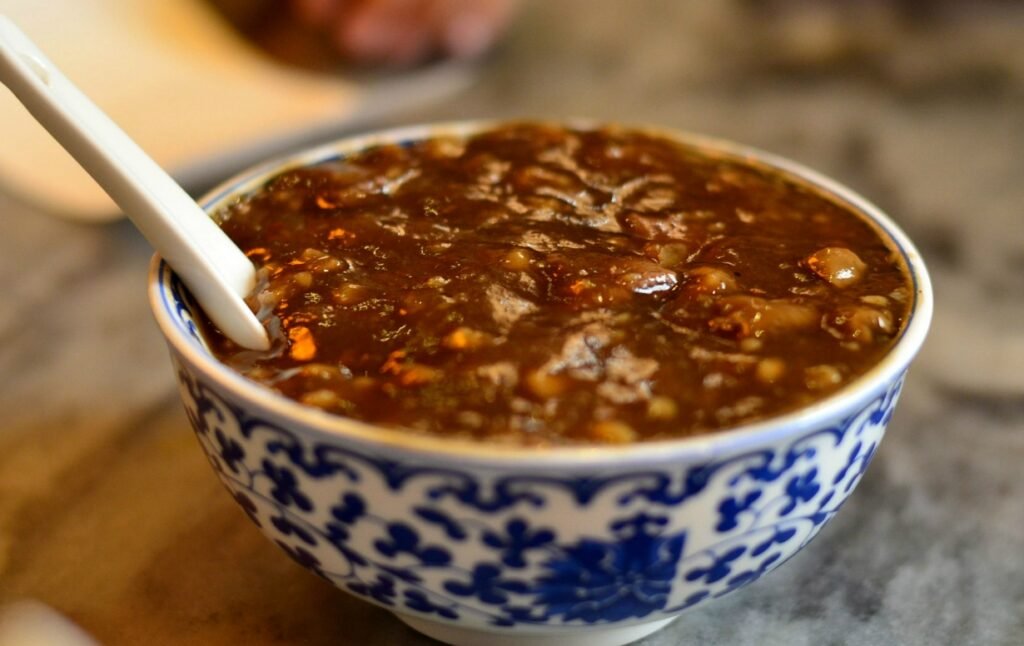
Stir-Fried Intestines and Liver
Chao Gan is a traditional Beijing snack, featuring pig intestines as the main ingredient, complemented by pig liver. The dish is seasoned with soy sauce, yellow bean sauce, raw garlic paste, cooked garlic paste, and pig bone broth. The result is a crystal-clear broth with rich, fatty intestines and liver that is light yet flavorful, offering a deep, delicious taste without being greasy.
Two well-known spots for Chao Gan are Tianxingju, located at Xianyu Kou near Qianmen, and Yaoji Chao Gan near the Drum Tower. The latter gained immense popularity after a visit from U.S. President Biden.

Donkey Rolls
Lu Da Gun is a traditional Beijing snack that enjoys widespread popularity. This delightful treat consists of layers of glutinous rice flour rolled with brown sugar and roasted soybean flour. It offers a sticky and sweet flavor, enhanced by a subtle aroma of osmanthus flowers, making it an irresistible delight that you can enjoy over and over again.
Suggested Tour Routes in Beijing
Anyone who’s been to Beijing often exclaims, “It’s just so big!” Trying to see it all in one go is definitely not feasible. It’s best to explore the city by dividing it into areas based on your interests. Here are a few suggested routes tailored to different themes:
- Historical and Royal Landmarks:
- Central Axis Exploration: Start from Tiananmen Square, visit the Forbidden City, then head to Jingshan Park for a panoramic view. Continue to the Temple of Heaven and end at the Yonghe Lama Temple.
- The Great Wall Adventure:
- Choose a section of the Great Wall to climb, such as Badaling for its accessibility or Mutianyu for a less crowded experience.
- Hutong Experience:
- Explore the charming hutongs in the second ring road, particularly around Nanluoguxiang and Shichahai, where you can immerse yourself in traditional Beijing culture.
- Nature and Scenery:
- Venture to the western suburbs for a hiking trip at the Fragrant Hills or the Summer Palace, enjoying beautiful views and lush landscapes.
- Modern Beijing:
- Head to the CBD area, starting at the China World Trade Center. Enjoy shopping or dining in Guomao, then check out the nightlife in Sanlitun, a vibrant bar district filled with both locals and expats.
Feel free to mix and match these routes based on your interests and the time you have in Beijing!
Best Travel Time to Beijing
The best times to visit Beijing are during spring and autumn.
- Spring (March to May): The weather is pleasant, with blooming flowers everywhere. You can enjoy boating at Beihai Park, take spring outings, or hike the Great Wall and visit ancient temples in the suburbs.
- Autumn (September to October): Although autumn is short, it offers crisp air and comfortable temperatures. The annual leaf-viewing activities, especially for ginkgo and red leaves, are particularly precious. Locations like the ginkgo avenue at Diaoyutai and the vibrant foliage at Fragrant Hills are must-visits for photography enthusiasts.
Clothing Recommendations
- Spring (March to May): The temperatures are moderate, but there can be windy dust. A light jacket is recommended, and wearing a mask can be helpful.
- Summer (June to August): Temperatures often exceed 30°C (86°F), with strong sunlight, so sun protection is essential. Some indoor places have strong air conditioning, so carrying a light jacket is advisable.
- Autumn (September to October): The weather can be dusty, so in addition to a thick jacket, wearing a mask is also recommended.
- Winter (November to February): The coldest temperatures can drop between -5°C and -10°C (23°F to 14°F), so a down jacket is necessary. For women, snow boots are a good choice. Additionally, northern winters are extremely dry, so southern visitors should carry hand cream to keep their skin moisturized.

